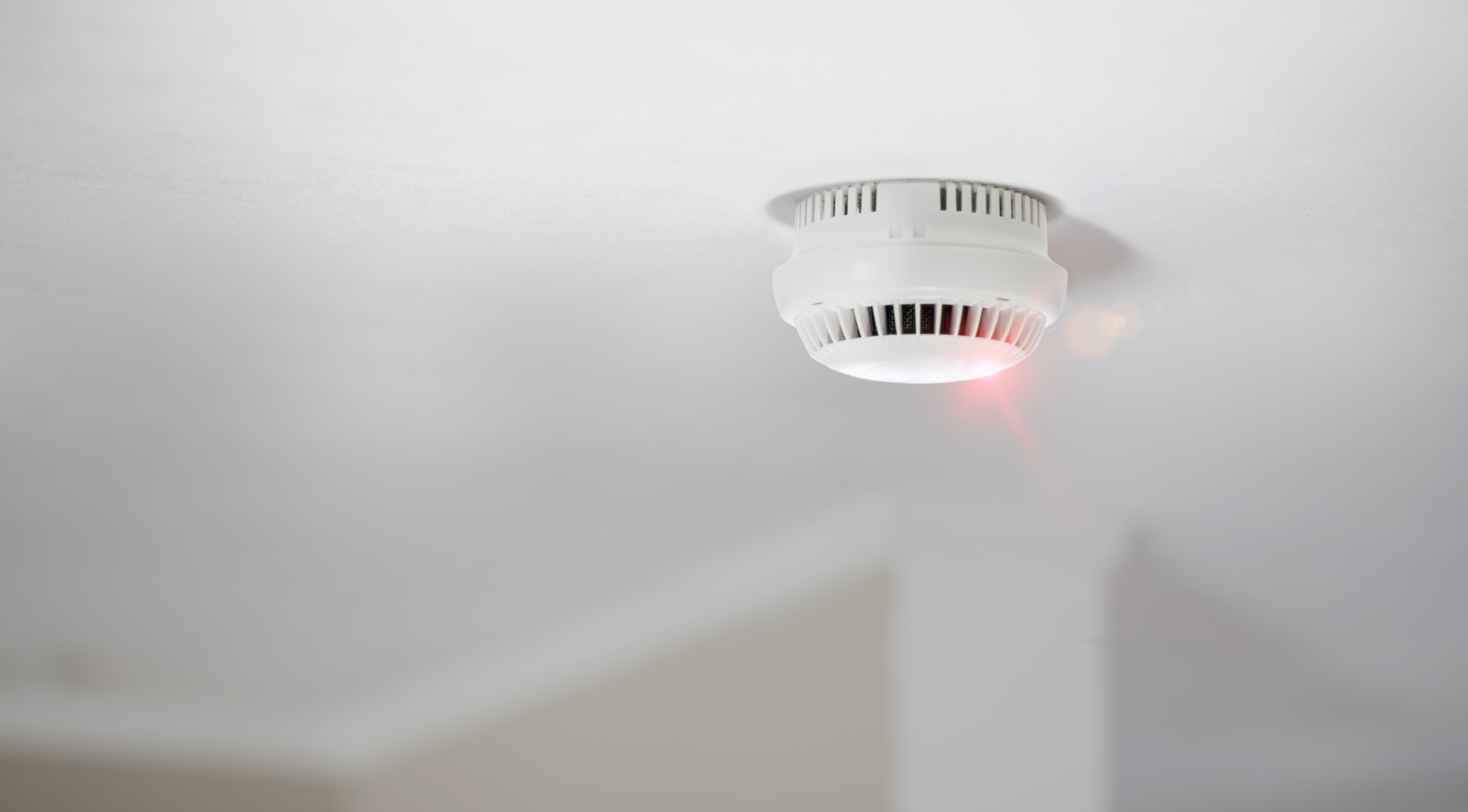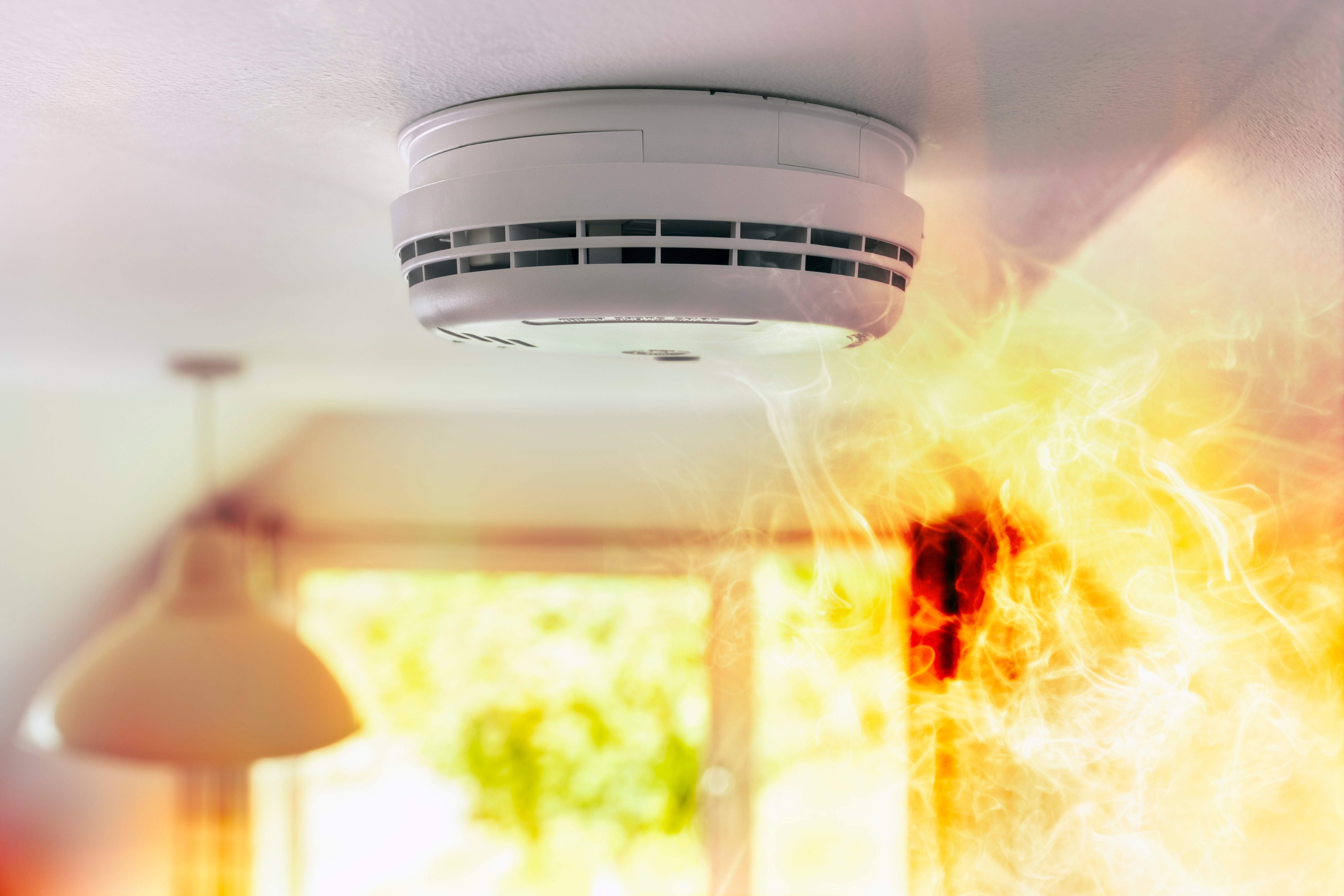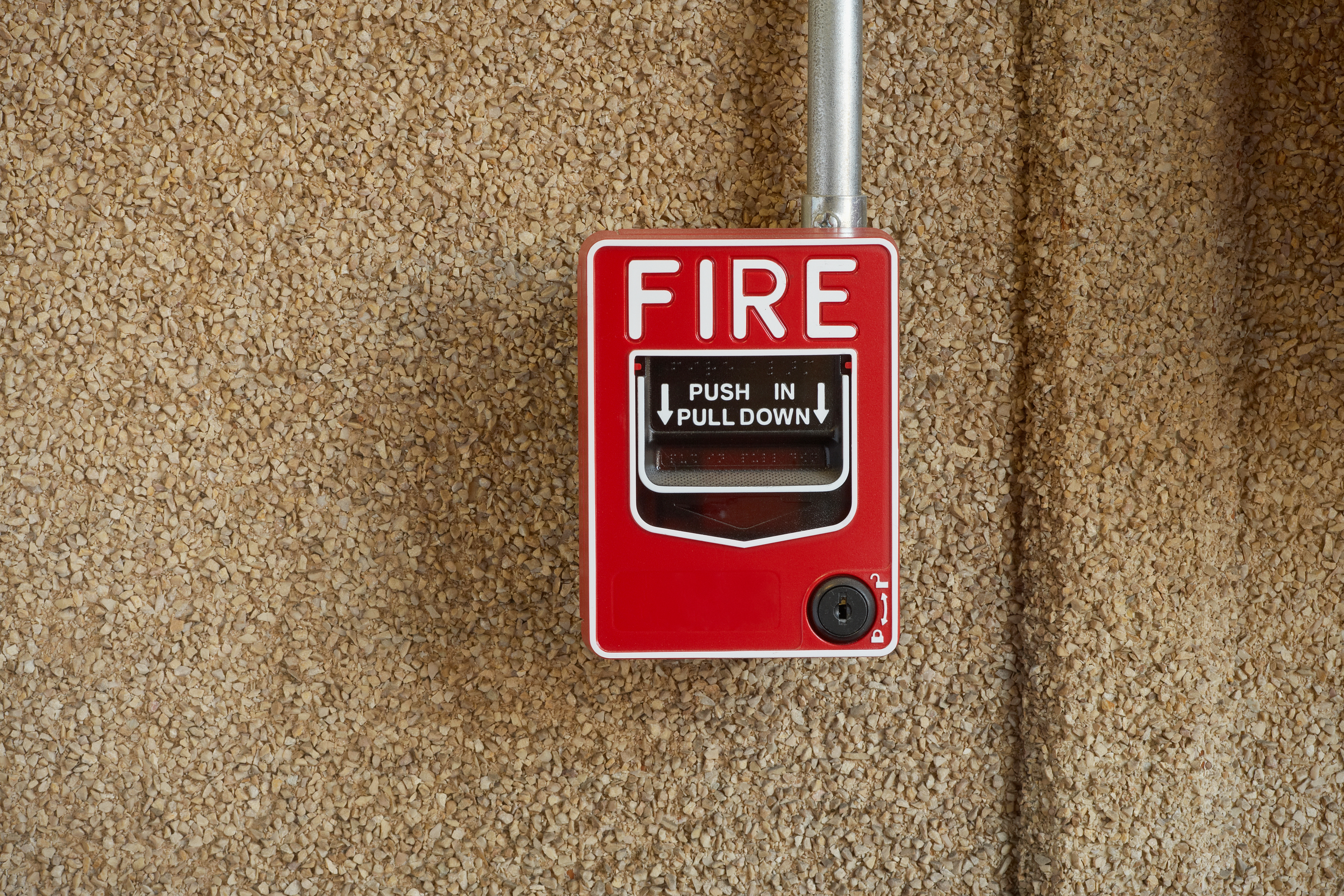Home and Business Fire Alarm System Installation
Secure Lock & Alarm is Beverly, MA, and the surrounding North Shore and Greater Boston areas’s go-to for fire and security systems. Whether you own a business or home, having a fire alarm system can save the lives and most valuable assets of those you love. Our team of fire alarm technicians knows the importance of not only installing these systems but also ensuring they are operating correctly. Our team knows the best locations to install these fire alarm systems to guarantee your safety and that of those around you. Learn more about our fire alarm system installation services and how our team can help you today.
Discover The Features Of Our Fire Alarm Systems
Regardless of a home or business, having a fire alarm system that offers more than just fire protection is essential for everyday living as a home or business owner. At Secure Lock & Alarm, our fire alarm systems provide additional protection and featured benefits for you. Discover below the features each of our fire alarm systems includes that our team installs, and contact us today for a quote.
Carbon Monoxide Detection System
Having a carbon monoxide detector installed with your home fire alarm system is a two-for-one benefit. Monitoring carbon monoxide is beneficial for keeping your family and business safe. Carbon monoxide is colorless and odorless but is fatal if not detected. Many home appliances, such as water heaters, gas stoves, and cars, are sources of carbon monoxide. Carbon monoxide can only be detected through a system and is not noticeable to humans alone. Installing a fire alarm system that also has carbon monoxide detectors will give you peace of mind that your home is protected from more than one hazard.
Smoke Detection System
Smoke and fire alarm systems are different and work better when combined. A fire alarm system that includes smoke detection is highly beneficial. When a fire occurs, smoke is often the first sign of a fire. Having these detectors go off can help prevent fires from spreading and you being unable to get the help you need. Whether in your home or a commercial building, smoke detectors will immediately sense the presence of smoke and signal off a loud sound to alert all members of the building at that time. There are different types of smoke detectors available. Contacting a professional alarm system company will help guide you in the right direction for your home or business.
Flood Detection System
Another benefit of installing fire alarm systems with Secure Lock & Alarm is the added benefit of flood detection. Whether you are on vacation and are not at your home or business, or you are unaware of flooding happening at that moment in time, a flood alert system is highly beneficial for saving your property. Early detection of flooding can save you tons of money and the hassle of cleaning up your property and saving your most valuable assets. Regardless of whether the flood is due to a storm or other circumstances, floods can be stressful and expensive to repair. Early detection of flooding in your property will prevent worse damage to your home or business.
Installing Home Fire Alarms in the Beverly, MA Area
When it comes to protecting your home from a fire, there are significant differences between smoke and fire alarms and how they protect you. Having just a smoke detector in every room is not always enough to keep your home safe if a fire occurs. Commercial fire regulations are very different from those of residential homes and multi-unit apartment buildings, so please take this into consideration as you read the information below. We recommend having ionization and photoelectric fire alarms in your home and monitoring those smoke detectors at our central station.
Choosing Your Home Fire Alarm System: Ionization Fire Alarms vs. Photoelectric Fire Alarms
Ionization fire alarms are more responsive to flaming fires than slow smoldering fires. Photoelectric smoke alarms are generally better suited for fires with long-smoldering times that release smoke clouds and a large number of dust particles. In these slow-burning and smoldering fire situations, ionization alarms will eventually trigger; however, the response can be delayed up to ten minutes. Ionization residential smoke alarms are no longer allowed as the only type of residential smoke alarms in Massachusetts.
A professional alarm company can monitor low-voltage ionization and photoelectric smoke detectors the same way that a burglar alarm is monitored. This is a really important point to understand. A properly functioning, unmonitored residential fire alarm will release the sounder and hopefully alert the residents. A monitored residential fire alarm alerts the residents and dispatches the fire department at the same time.
How Do Ionization Smoke Alarms Work?
Ionization smoke detectors are the most commonly used type for residential applications and will typically respond 30 to 90 seconds faster to a flaming fire than a photoelectric alarm. According to the National Fire Protection Association, these alarms have a small amount of radioactive material between two electrically charged plates, which ionizes the air and causes airflow between the plates. Small amounts of smoke can enter the chamber, thus disrupting the flow of ions, reducing the current flow, and activating the alarm. Ionization alarms are known to give off many false alarms, mostly from cooking and the steam from hot showers.
How Do Photoelectric Smoke Alarms Work?
These alarms are much more responsive when a fire begins with long periods of smoldering rather than a quick flaming fire. Photoelectric alarms will respond 15-50 minutes (Yes, Minutes) faster than an ionization alarm when there is a flaming fire. Photoelectric-type alarms aim a light source into a sensing chamber. As smoke enters the chamber, light is bounced onto the light sensor, which triggers the alarm.
Is Your Home Compliant with the Massachusetts Fire Code?
The residential fire alarm code changed drastically in April of 2010. If you purchased your home after 2010, you most likely have the correct equipment. Conversely, if you purchased your home prior to 2010, we suggest revamping your equipment. Most homeowners believe they can go to a big box store, buy a $6.00 alarm and an extra set of batteries, and be covered. There is a major difference in life safety when having a professional fire alarm company install and monitor your alarm system. Our recommendation is to install dual smoke alarms that are built with both ionization and photoelectric properties. These multifaceted units can run up to $100.00; however, we believe the extra investment is well worth it. Contrarians would argue that these alarms shouldn’t be used because they can be a nuisance due to false alarms because of the ionization sensors. This is an obvious possibility. However, proper placement of smoke alarms can reduce these incidents. The question is, would you rather have a false alarm when you burn your bacon or not have an alarm triggered when you really need it in order to protect your family and precious material goods?
Massachusetts Smoke Alarm Regulations
These revisions took effect on April 5, 2010
These regulations apply to buildings undergoing sale or transfer containing up to five residential units. The regulation requires photoelectric smoke detectors within 20 feet of a kitchen or bath containing a shower. Areas located beyond 20 feet will be required to contain dual detection by either a single unit or two separate units. These regulations will be enforced when the residence is sold or transferred. Homeowners who sold their homes after April 5, 2010, have had to meet these new requirements upon a real estate transaction. The problem is that if a home has not been sold after this date, there is a high likelihood that the building is not outfitted correctly. Visit the Massachusetts Board of Fire Prevention Regulations for a complete set of standards.
Are Your Residential Fire Alarms Installed Correctly?
- Choose smoke alarms that have the label of a recognized testing laboratory, such as Underwriters Laboratories (UL).
- Install smoke alarms inside each bedroom, outside each sleeping area, and on every level of the home, including the basement.
- On levels without bedrooms, install alarms in the living room and near the stairway to the upper level.
- Smoke alarms in the basement should be installed on the ceiling at the bottom of the stairs leading to the next level.
- Smoke alarms should be installed at least 10 feet from a cooking appliance to minimize false alarms when cooking.
- If you have ceilings that are pitched, install the alarm within 3 feet of the peak but not at the apex of the peak.
- Don’t install smoke alarms near windows, doors, or ducts, as drafts may interfere with their operation.
- Never paint smoke alarms. For best protection, interconnect all the alarms so that if one sounds, they all sound. For this to occur, all alarms must be from the same manufacturer.
Installing Commercial Fire Alarms For Your Business
Business fire alarms are a completely different animal than residential fire alarms. We are a Firelite-certified company and can design systems from scratch for new installations or upgrade current systems for today’s regulations. Our fire alarm systems provide the safety and requirements for your business regardless of the industry and location your business is in. Discover the features our commercial fire alarms include below, and contact our fire alarm installation team for more information!
- Well-versed in differing town regulations
- Addressable Systems
- Design Custom Systems
- Fire Alarm Testing
- Fire Alarms, Emergency, and Exit Lights
- Flood detection systems
- Carbon monoxide detection systems
Frequently Asked Questions About Fire Alarm System Installation Services
What is the difference between a fire alarm system and a smoke alarm?
A smoke alarm is an important component of every fire alarm system. Smoke alarms signal to people that smoke has been detected in a home. A loud alarm will go off, and a blinking light will signal that smoke is present. Fire alarm systems are legally required in buildings, schools, and other commercial buildings. They are designed to alert hundreds of people that a fire has been detected and to evacuate the building. Fire alarms will also signal a loud alarm and flashing lights so everyone in the building is alert of the emergency.
How often do you need to replace a fire alarm system?
Fire alarm systems are expected to be replaced every ten years. As the alarm sensors wear, replacing the system sooner rather than later is important for keeping your home or business safe. Be sure to read the label on when your fire alarm system was installed so you can be sure it is working properly and get it updated when necessary.
Who is a fire alarm technician?
A fire alarm technician is a professional who installs, tests and maintains fire alarm systems. Our Secure Lock & Alarm team will install your system, test it to ensure it is working properly, and provide any maintenance services if your home or business is in need. Our technician will review the blueprints and determine the best place for installation in your home or business. We ensure it complies with all the rules and regulations for your industry and location.
What are the benefits of installing a fire alarm system?
Installing a fire alarm system for your home or business has various benefits for your health and safety. Early detection, protection of those around you and your valuables, enhanced features and system detections, and alerting fire departments of a fire are all significant benefits of installing a fire alarm system.
Contact Our Home & Business Fire Alarm Installation Company
Keeping your home and business safe is our top priority at Secure Lock & Alarm. If you are looking to install new fire alarm systems for your home or business in Beverly, MA, or the surrounding area, our team is ready to help. We know the importance of protecting your family and your most valuable assets. Our fire alarm systems are highly effective at detecting and alerting you of smoke and fire in your home. Request a quote for our fire alarm systems so you can get started right away on keeping your home and business safe. Call our team at 978-927-6400 or fill out our contact form, and we will get back to you as soon as possible.



